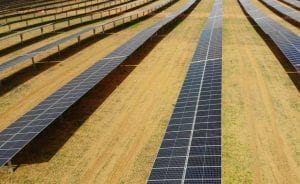 The Australian Energy Regulator has set a fixed exit fee for gas customers in Victoria as part of a series of moves designed to address the accelerating “death spiral” for fossil gas networks as households cut their connections as part of the shift to electrify everything.
The Australian Energy Regulator has set a fixed exit fee for gas customers in Victoria as part of a series of moves designed to address the accelerating “death spiral” for fossil gas networks as households cut their connections as part of the shift to electrify everything.
The prospect of the death spiral for gas, and how to manage it, has become a key focus for policy makers, regulators and investors, and the new fee is designed to put limits on the price that gas networks can charge customers who quit the network.
In a notice of final decisions on gas access arrangements for the three Victorian distribution networks – AusNet, Australian Gas Networks and Multinet – the Australian Energy Regulator says the decisions it has made are as much about safety as it is about social equity.
As RenewEconomy and its sister site One Step Off The Grid have reported, households choosing to go all-electric and seeking to cutt ties to the gas network have been advised of fees of nearly $1,000 or more.
This, the AER notes, has led to many households opting simply to close off the supply of gas at the meter, rather than paying for the permanent abolishment of the connection, through the removal of network assets and disconnection from the mains.
This is not the safest option and also kicks the can down the road on the inevitable cost of doing the job properly in the long term.
So the AER is proposing a set cost for abolishment that reduces the upfront payment from the disconnecting household and spreads the remaining cost to the network company across all gas users.
“To reduce the price difference between the two disconnection services, and the safety risks it appears to be creating, this final decision retains an upfront cost of $220 for connection abolishment and shares the remainder between all customers,” the decision says.
“This means the shared portion of abolishment costs needs to be added to the regulated revenue we use to set haulage tariffs,” it says, stressing that the decision is “not a change” to the total costs AusNet is allowed to recover for connection abolishment services, but a change to the way in which costs are recovered.
The AER also stresses that this measure will be a temporary fix, and not a permanent one.
“Socialising costs in this way helps to address the safety risk of leaving ‘live’ but unused assets in place by removing the incentive for customers seeking to avoid the high cost of permanent abolishment when a connection is no longer required,” says AER chair Clare Savage.
“However, a socialised abolishment cost model is only an interim measure to address this public safety issue,” Savage adds.
“Further work is required across the sector to develop a more sustainable solution. In the event that gas demand declines and the number of customers leaving the network increases, there will be upwards pressure on prices for remaining customers.”
This brings us to the second contentious issue the AER addresses in its Victorian decision – how quickly and how much gas distribution companies can claw back the various costs of the death spiral.
AER says that while more and more customers are leaving the gas network or at least weaning themselves from the fuel, and fewer are connecting to gas for their new-build homes, the ongoing costs of maintaining the network are shared by a smaller number of customers.
“This poses a number of challenges,” the report says, “including that the cost burden of past investments may be disproportionately borne by future gas customers and that assets may be economically stranded.”
On this front, the AER says there is “sufficient evidence now, backed up by a convincing business narrative,” to support some accelerated depreciation of assets.
“We want to do this in a measured way that balances the impact increased depreciation will have on prices in 2023–28 with the longer term price outlook,” it says.
To this end, the AER does not allow the full amount of accelerated depreciation proposed by the network companies – in the case of AusNet, for example, a proposal of $200 million is revised down to $105 million.
“It is important that we start taking small steps now to manage the equitable recovery of those costs from what may be a declining, and sometimes vulnerable, customer base over time,” Savage said.
The AER says by allowing a small start to accelerated depreciation of the networks, it can balance recovery of asset costs between current customers and a potentially smaller number of customers in the future.
For consumers, this means an increase to distribution component of their gas bills, somewhere in the order of around 5 per cent. The irony is, with gas prices already inflated, and further increases to bills are likely to have the effect of speeding up the exodus to solar electric homes.
In the longer term, the regulator warns that gas access arrangement reviews like this one may not be sufficient, or appropriate, to deal with the range of issues caused by the downward spiral in gas demand.
“There is an important role for governments to continue to set clear policy direction on the future use of gas in order to facilitate a safe, reliable and affordable transition and for governments, networks, market bodies and investors to develop a long term strategy for taking gas networks forward,” Savage said.








